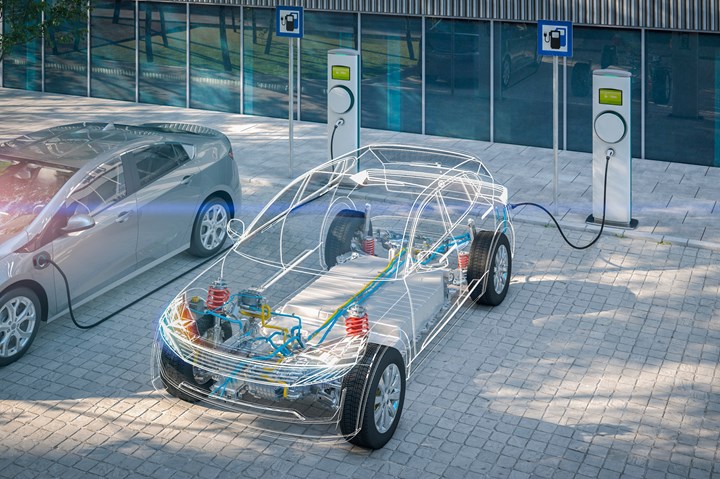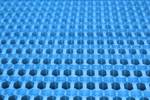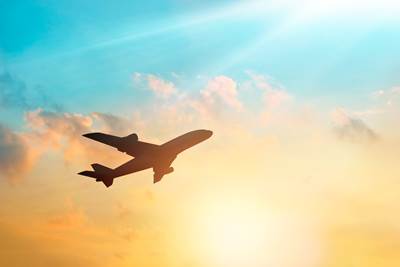What is the role of composites in electric vehicles?
Governments and automakers are sending clear signals that electric vehicles are the future. Lightweighting EVs with composites seems obvious, but Dale Brosius says there are more opportunities not to be missed.

Photo Credit: Getty Images
The 2020 U.S. presidential election is over (although not without considerable drama) and Joe Biden will be sworn into office on January 20, 2021. He will inherit an ongoing pandemic that will, we hope, ameliorate over the following months with the administration of vaccines, putting the U.S., along with the rest of the world, on a path back to a “new normal.”
Biden also brings with him an ambitious climate change agenda, one focused on increasing investments in clean energy and the transformation of ground transportation away from the internal combustion engine (ICE) vehicle and toward the battery electric vehicle (EV). These initiatives include financial incentives for consumers to buy EVs, the installation of 550,000 charging stations across the U.S. and replacement of ICE vehicles by EVs in government fleets.
Biden is not the first leader to propose such an agenda. In November 2020, U.K. Prime Minister Boris Johnson announced aggressive goals to ban the sale of gasoline- and diesel-fueled cars by 2030, and hybrid vehicles by 2035 (previously 2035 and 2040, respectively). Johnson also wants to provide consumer incentives and add charging stations across the U.K. Other European countries have set similar bans on ICE vehicles ranging from 2025 to 2040. In Asia, Japan is targeting 50-70% hybrid and EV sales by 2030, and China, already the world leader in EV sales, is targeting a mix of 50% electric, plug-in hybrid and fuel cell vehicles, and 50% hybrid vehicles by 2035, with no pure ICE vehicle sales.
Obviously, to accomplish all of this requires the development and manufacture of millions of hybrid and zero-emission vehicles. While Tesla has long been considered an automotive industry disruptor, inspiring startups including Rivian and Lucid Motors, the world’s largest OEMs are rising to the challenge. In November, Volkswagen increased its planned investment in EVs to $41 billion by 2025, and will offer 70 fully-electric models by 2030, with more than 20 already available today. At the same time, General Motors (GM) raised its commitment to invest $27 billion to develop 30 EV models globally by 2025, with at least 20 of those available in the U.S. GM also withdrew support for a Trump administration lawsuit against the State of California, which is setting its own more restrictive automotive emissions standards. Political expediency? Perhaps.
The sooner our industry moves away from seeing composites as simply a way to reduce mass, the better.
Clearly, electric vehicles are the future. Bloomberg NEF forecasts cost parity between EVs and ICE vehicles by 2025, and that sales of EVs, plug-in hybrids and fuel cell vehicles will surpass ICE vehicle sales by 2037, reaching 55 million vehicles annually by 2040. Due to the impact of the pandemic on global vehicle sales, Bloomberg believes ICE vehicle sales will never again reach 2019 levels due to increased penetration from these cleaner models.
So what does this mean for composites? Most electric vehicles on the market today have a range of 250 to 400 miles (400 to 640 kilometers), and “range anxiety” is a real thing, especially since charging stations are not as ubiquitous as gasoline stations. Plus, batteries are very heavy, so increasing range requires adding weight. This makes lightweighting using composites a great opportunity, right?
We’ve seen this play out before in ICE vehicles, going back to the 1980s and often since. The line “automakers have taken powertrain technology as far as it can go, so now have to rely on lightweight composites to improve fuel efficiency” was disproven with multi-speed transmissions, fuel injection, cylinder deactivation and other lightweighting alternatives. A similar story is happening in battery technology; Bloomberg forecasts battery energy density to improve by approximately 50% by 2030, and costs per kilowatt-hour to fall by more than half in the same time frame. As battery costs fall and energy density increases, extending vehicle range will be as simple as adding batteries.
For composites, the automotive market may be shifting from ICE vehicles to EVs, but the path to adoption hasn’t. Earning a position in the material mix on a vehicle platform still comes down to meeting production rates and reducing costs, providing value through parts consolidation, multifunction integration (embedded wiring or sensors, for example), or reducing capital and tooling costs. One high-profile application appears to be battery enclosures, particularly given the fire, thermal and electrical requirements that can be met by composites, especially if such enclosures can take advantage of the anisotropic behavior of composites to provide torsional stiffness to the body structure. And, as EVs enable the move toward an autonomous future, the ability for composites to provide more complex shapes will open opportunities for designers to differentiate platforms and provide improved consumer experiences. The bottom line? The sooner our industry moves away from seeing automotive composites as simply a way to reduce mass, the better.
Related Content
Exel Composites supplies fiberglass profiles for Foton electric buses
Partnership with Chinese automotive manufacturer will see the implementation of pultruded profiles in various bus models, backed by weight savings, complex geometries and long life.
Read MoreAptera reveals first composite production parts for BinC vehicle
Pre-production efforts are underway to begin building production-intent vehicles.
Read MoreAutomotive chassis components lighten up with composites
Composite and hybrid components reduce mass, increase functionality on electric and conventional passenger vehicles.
Read MoreSeat frame demonstrates next-generation autocomposites design
Light weight, simplified/cost-effective manufacturing, passenger comfort and safety informed materials and process innovations and won awards for the 2022 Toyota Tundra‘s second-row seat frame.
Read MoreRead Next
Cloudy skies ahead for composites
In light of the uncertainty the composites industry faces, business travel, the supply chain and the inability to develop next-generation leaders are concerns to watch for leading into 2021.
Read MorePushing EVs forward
Multifunctional chassis design and novel composites processes enable lighter, longer-range, safer electric vehicles.
Read MoreAZL, EconCore, Audi partner to develop composite battery casings
A new project aims to identify potential opportunities and challenges for composite materials within the electric vehicle battery enclosure market.
Read More




















